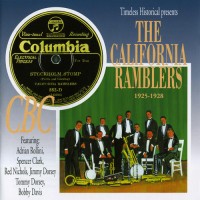

The JPEG images that resulted are as legible as the original liner cards.

Niven's liner cards, I scanned each card at 400 dpi resolution. In order to create a complete copy of all of Mr. Other legends, such as Bennie Moten and many, many others, were in his collection did not make the “cut” for these tapes. Niven, he has indicated that the materials in this selection of “Early Jazz Legends” only represents about 40-50% of what he once had in his jazz record collection. Niven's audio commentaries referencing certain artists still being alive at the time of the commentaries (for example, Buck Clayton, who passed away in 1991, is living, and Johnny Hodges' salary is compared to “1993 dollars”), that he put the tape compilation together during a period of time beginning somewhere in the mid to late 1980s and ending somewhere in the early 1990s. I decided to choose from the years prior to the BeBop period, i.e., before Gillespie, Bird, Monk, Miles. No two people will agree with my selection of Legends. My collection amounted to over 10,000 hours of tapes. The music that had been of such significance in my life. The main reason for doing this rather major project was to put my collection into some kind of compendium form that would attract my children to I had always hoped that maybe at least one of my kids would show an interest in my collection, so I began making tapes that could include a chronological compilation of my collection, along with commentary: date and place of recording, personnel, soloists, etc. But I also found that such a collection was a first-class burden when I was moving through the post-war years with family, financial, and other fidelity responsibilities taking priority. All the big names of jazz, along with lesser legends, were included, and I found myself with a first class treasure of early jazz music. Throughout the ten years prior to WWII, during my high school and college years, my 78 RPM 10”, followed by 33 1/3 RPM LP, collection grew to the I became the proud owner of every recording up to the start of WWII and some 75% of his recordings until his death in 1974, some 180 hours of the recorded Duke Ellington. One year prior to Louis' and Bix's first recording, Duke and his six piece band “The Washingtonians” with Bubber Miley, cornet Charlie Irvis, trombone Otto Hardwicke, sax Fred Guy, banjo Sonny Greer, drums and Duke, piano, had their initial commercial recording date in November 1924. Over the next few years, I acquired every record Bix made prior to his early death in 1931.Įncouraged by my interest in jazz recordings, my cousin came up with a third suggestion for my collection: Duke Ellington. Signorelli, piano and Chauncey Morehouse, drums. I dug, again, into my newspaper route money (35 cents) and bought the October 5, 1927, recording of “At the Jazz Band Ball,” backed by “Jazz Me Blues” by “Bix and his Gang”: Bix on cornet Bill Rank, trombone Don Murray, clarinet Adrian Rollini, bass sax Frank My hip cousin then advised me to get some recordings by another cornetist, Bix Beiderbecke, who started recording for OK the same year (1925). It was a 10” 78 RPM OK recording of “My Heart” made in Chicago on November 12, 1925, by Louis Armstrong's Hot Five with Kid Ory, trombone Johnny Dodds, clarinet Lil Armstrong, piano and Johnny St. My 20-year-old cousin introduced me to jazz when I was 10. Powers, 2010-2011.Īn Early Jazz Recording Collection by David W. Archived to CD-Quality Digital Audio by Kevin J. Niven to the Foxborough High School Jazz Program, Stephen C. Meticulously Collected, Compiled, and Narrated by David W. 691 JPEG scans of cassette liner cards & literature.


 0 kommentar(er)
0 kommentar(er)
